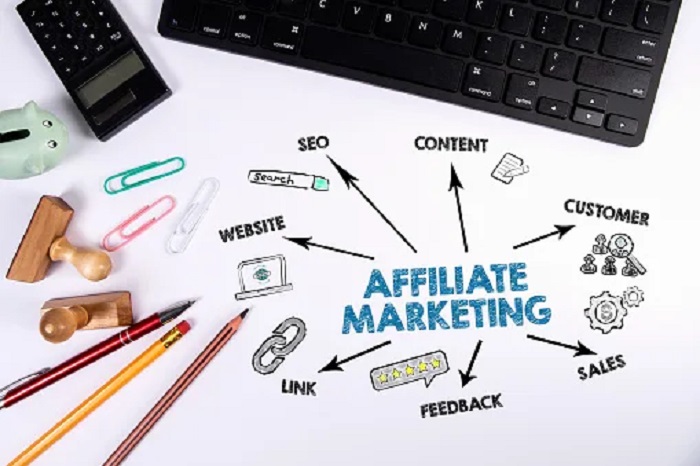Instagram continues to maintain its status as the flagship platform for affiliate marketing. Despite growing competition and stricter rules, this social network provides direct access to a solvent audience and an extensive arsenal of advertising opportunities.
By 2025, Instagram will have completely transformed into a holistic ecosystem. All of its elements — organic content, short videos, and advertising integrations — are closely intertwined, forming effective promotion mechanisms.
We recommend reading the article “Top 5 Effective Ways to Make Money on Instagram in 2025” at AffCommunity.
To achieve maximum results, webmasters must combine different formats, create creativity with elements of nativeness, and quickly adapt to algorithm updates.
Why Instagram remains effective for affiliate marketing
The platform retains a number of critical advantages for affiliate marketing models:
- Solvent audience. The core user base consists of economically active people aged 20-40 who make their own financial decisions and tend to trust recommendations.
- Diversity of advertising formats. Campaigns can be launched in the feed, through Stories, trending Reels, or by leveraging the authority of bloggers. This diversity opens up a wide range of opportunities for finding effective combinations.
- Visual dominance. Instagram has been and remains a platform for vivid images and videos that emotionally engage and provoke a lively response.
- Accurate targeting. Built-in tools allow for in-depth audience segmentation based on behavioral patterns and geolocation, which is indispensable for working with niche offers.
Together, these factors create a unique environment where any message can be conveyed to the target audience in the most appropriate format. This foundation is the basis for successful affiliate marketing.
Current promotion formats: trends for 2025
The current priorities for webmasters are:
- Feed. A classic format that is gradually losing its effectiveness. The main focus has shifted towards video, as static content is becoming less effective at holding attention;
- Stories. A format with high click-through rate (CTR). Advertising here should be dynamic, concise, and immediately engage the user using the “problem-solution-call to action” model;
- Reels. The cornerstone of organic growth. The algorithm actively promotes short videos, turning them into a powerful source of targeted traffic;
- integration with bloggers. Native advertising in the form of collaborations remains relevant. Both direct placements and softer, more subtle formats are in vogue;
Thus, a productive strategy in 2025 cannot rely on a single source of traffic. It is always a synergy: viral reach through Reels, direct impact through Stories, trust building through integrations, and background presence in the feed. The key skill is the ability to competently allocate resources between these channels.
Challenges for webmasters on Instagram
Specialists in this field face the following difficulties:
- Strict moderation. Ads are increasingly being blocked for “inappropriate content.” This is especially critical for offers in gray and sensitive niches.
- Rising advertising costs. CPM is steadily increasing, and competition for attention is intensifying, which complicates the testing phase for beginners.
- Rapid creative burnout. Users see a huge amount of advertising every day, which causes the same materials to rapidly lose their effectiveness.
- Dependence on algorithms. Any changes in the logic of content ranking can instantly collapse coverage.
These challenges are radically changing the very essence of social media affiliate marketing. It is no longer a way to make a “quick buck” but has become a professional activity that requires strategic planning, an analytical approach, and a willingness to constantly adapt.
Strategies for working on Instagram in 2025
For stable results, we recommend using the following tactics:
- Hybrid funnels. A combination of paid traffic and organic promotion.
- Focus on video content. Static images are losing out. Videos with a compelling storyline, dynamic editing, and unobtrusive presentation have become a must-have element;
- testing micro-audiences. Instead of broad campaigns, webmasters are increasingly using micro-niche targeting, focusing on narrow interests and behavior patterns;
- preliminary run. Users rarely take spontaneous actions. Therefore, the “advertising → subscription → engagement through content → conversion” scheme proves to be more effective than direct sales;
- use of UGC (user-generated content). Video reviews, overviews, and product demonstrations from real people inspire more trust than staged advertising and increase conversion.
Implementing these strategies helps systematize work processes and minimize risks associated with external factors.
The future of affiliate marketing on Instagram
The platform focuses on video and depth of engagement. Publishers need long-term strategies, not one-time leads. Creating your own thematic accounts and communities allows you to reduce costs and dependence on your advertising budget. Success awaits those who view Instagram as a full-fledged business environment where personal branding becomes a valuable asset.
Conclusion
Instagram is a platform with high barriers to entry and strict moderation, but it still has enormous potential for professionals who know how to work with trends and creativity. The key to success is realizing that the winners here are those who combine a creative approach with systematic analysis and strategic planning.











Leave a Reply